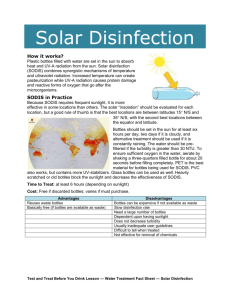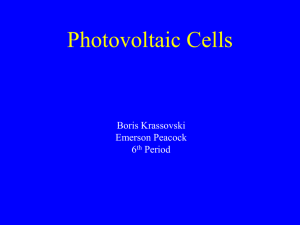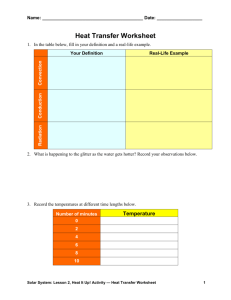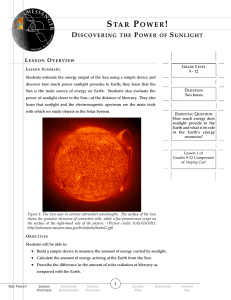Star Power!
advertisement
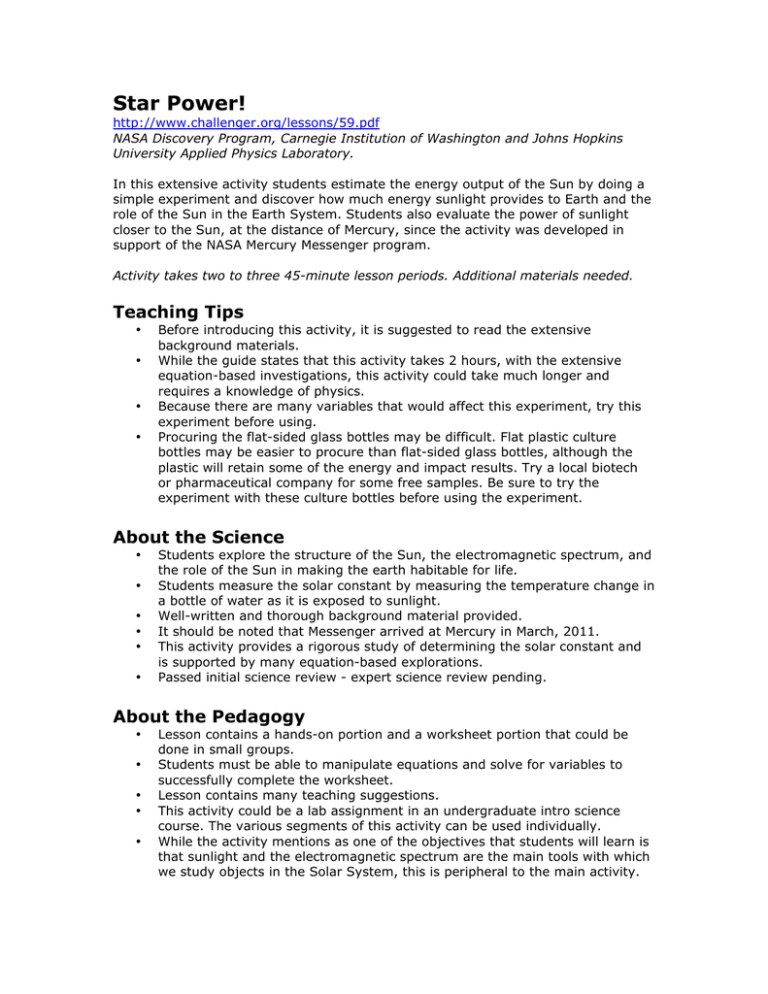
Star Power! http://www.challenger.org/lessons/59.pdf NASA Discovery Program, Carnegie Institution of Washington and Johns Hopkins University Applied Physics Laboratory. In this extensive activity students estimate the energy output of the Sun by doing a simple experiment and discover how much energy sunlight provides to Earth and the role of the Sun in the Earth System. Students also evaluate the power of sunlight closer to the Sun, at the distance of Mercury, since the activity was developed in support of the NASA Mercury Messenger program. Activity takes two to three 45-minute lesson periods. Additional materials needed. Teaching Tips • • • • Before introducing this activity, it is suggested to read the extensive background materials. While the guide states that this activity takes 2 hours, with the extensive equation-based investigations, this activity could take much longer and requires a knowledge of physics. Because there are many variables that would affect this experiment, try this experiment before using. Procuring the flat-sided glass bottles may be difficult. Flat plastic culture bottles may be easier to procure than flat-sided glass bottles, although the plastic will retain some of the energy and impact results. Try a local biotech or pharmaceutical company for some free samples. Be sure to try the experiment with these culture bottles before using the experiment. About the Science • • • • • • Students explore the structure of the Sun, the electromagnetic spectrum, and the role of the Sun in making the earth habitable for life. Students measure the solar constant by measuring the temperature change in a bottle of water as it is exposed to sunlight. Well-written and thorough background material provided. It should be noted that Messenger arrived at Mercury in March, 2011. This activity provides a rigorous study of determining the solar constant and is supported by many equation-based explorations. Passed initial science review - expert science review pending. About the Pedagogy • • • • • Lesson contains a hands-on portion and a worksheet portion that could be done in small groups. Students must be able to manipulate equations and solve for variables to successfully complete the worksheet. Lesson contains many teaching suggestions. This activity could be a lab assignment in an undergraduate intro science course. The various segments of this activity can be used individually. While the activity mentions as one of the objectives that students will learn is that sunlight and the electromagnetic spectrum are the main tools with which we study objects in the Solar System, this is peripheral to the main activity. • • The Potential for Solar Energy Use section ties the activity to the students' lives. There are multiple extensions suggested where students can design and manipulate different variables. The lesson also notes opportunities to engage students in discussions about experimental error. Technical Details/Ease of Use • Due to the length of the resource, the activity takes a commitment of time to prepare for teaching.

